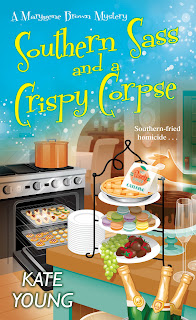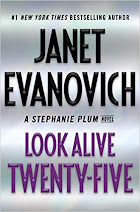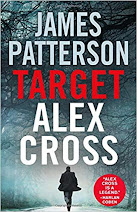I am so excited to have Jill Grime here at Paranormal and Romantic Suspense Reviews with a Spotlight, Guest Post and Q and A.
Thanks Jill and PR by the Books for allowing me to join your The Ultimate College Student Health Handbook Blog Tour!
Please take it away, Jill!
5 Must-Have Items for Your College Freshman
You’re making a list and checking it twice…because especially if this is your FIRST kid heading off to college, you want to be sure you’ve included every critical item.
· Twin XL (Extra Long) Sheets? Check.
· Command Strips in every shape, size and strength? Check.
(Much bigger deal for girls vs. guys, but this is the only way to hang stuff on walls.)
· Dorm Bed Risers? (I highly recommend the ones with extra outlets.) Check.
Chargers, fan, laundry bag, clothes, shoes, coats…the list goes on. And on. And ON. What could possibly be missing? From my perspective as a seasoned move-in mom and a university doctor, here ‘s my list of the top five forgotten items:
1. Small Tool Kit: Hammer, screwdrivers, wrench set, pliers, scissors, tape measure and level. This should be last in, first out, because you’ll often need these immediately to assemble and disassemble dorm room furniture or fix a stuck drawer. Pro tip: Add in a couple garbage bags; trash piles up as soon as you start unpacking.
2. Backup Prescription Glasses: especially for the kid that ALWAYS wears contacts! Why? Because if you get a bad stye or “pinkeye” (viral conjunctivitis), or more commonly, you accidentally fall asleep in your contacts or get something in your eye that scratches your cornea- you CANNOT wear contacts for several days to a week or more. And seeing clearly tends to help grades. If you always wear glasses, the backup pair is for when yours break or disappear. And inevitably, it happens during midterms or finals.
3. Small Lock Box: If you take prescription medications for ADD, this is a must. These stimulant pills sell for $5-10 each (a felony if caught!!) and dorm rooms are rarely private and/or consistently locked. Please remove the temptation for others and keep your meds safe. Lock boxes also work well for pricey jewelry, your passport, and while we’re at it, your backup glasses.
4. Heating Pad: Okay, not critical, but a great way to guarantee your popularity! Seriously, few students have these, but those that do tell me “EVERYONE borrows it” for aching muscles, back spasms and “cramps”. Bonus points: in cold climates they can double as an electric blanket (just don’t fall asleep on top of one, as this can cause burns.)
5. Solid Air Freshener: Plug-ins are rarely allowed in dorms, but you can place a solid or gel freshener in your closet (by your shoes) and tuck another under your bed. Extra-strong odors? Bamboo charcoal bags are a pricey option, but they work incredibly well. Choose a neutral or “fresh” smell, not “flowery” or “citrus” as you don’t know your roommate’s sensitivity to different scents. Bodies, dirty clothes, third-hand smoke and old dorms all get very smelly. Unless you are moving into a brand-new dorm with a neat-freak roommate, these fresheners can be lifesavers. Or at the very least, roommate-savers.
Bottom Line: Add these five items to your list for a smoother move-in and a healthier, safer semester! (If you’re flying, pack the glasses and shop for the rest when you arrive.) Good Luck!
Social Media
Facebook: https://twitter.com/jillgrimesmd?lang=en
Promotion Links
Author website:
https://jillgrimesmd.com/the-ultimate-college-student-health-handbook/
Buy links
Amazon:
https://www.amazon.com/Ultimate-College-Student-Health-Handbook/dp/1510751033
Virtual Book Tour Q and A
1. What inspired you to write The Ultimate College Student Handbook?
Around ten years ago, I started making personalized first aid kits as high school graduation gifts. Initially I included one index card with “cheat notes” about which medications to take when, but this expanded steadily as I tried to include answers to common texts that I received from these kids throughout the year. Before long, I was up to a twenty page booklet, and I realized I really needed to expand to an actual book. I’m continually delighted when parents tell me their now “grownup” kids are still asking for “first aid kit refills” even several years after their college graduation!


2. What is the best advice that parents can give their child before going off to college for the first time?
College will likely be the best years of your life so far...BUT there will still be bad DAYS and even weeks thrown in the mix. Many students have such high expectations that when the first disappointments hit (especially not making the club/Greek org they wanted, their first bad grade, not liking their roommate) it feels twice as devastating. Also, at first, join everything! Don’t wait for the “perfect” group. This is your chance to explore everything from political to service to quirky art clubs, and a wonderful time to meet people with totally different backgrounds and perspectives. As you settle in, you will quickly figure out which ones you enjoy and which ones you should drop.
3. What do you think parents should send in a college student’s first aid kit?
Please see the bonus DIY first aid kit section for the full shopping list and instructions, but start with a mid-range priced oral digital thermometer (around $8-12), an ACE wrap, “good” bandaids for fingers/heels, Tylenol, Advil, topical steroid cream (hydrocortisone), antibiotic cream/ointment (like Neosporin), a copy of your health insurance card and the date of your kid’s last tetanus shot (plus ideally a copy of all their immunizations).
4. What are five unexpected items that every college student should pack for college?
a. Prescription glasses if you have them! (even though they only wear contacts, BRING THEM because with pink eye or any other eye problem, they will need their glasses and frequently students tell us it never crossed their mind to bring them to campus.)
b. Heating pad- doubles as a heated blanket in cold climates, plus great for female menstrual cramps or back pain in anyone.
c. Old fashioned reusable ice bag
d. Small lock box for medications (especially if on ADD meds)
e. Small tool kit (scissors, hammer, tape- invaluable on move in day!)
5. What are some of the most common medical issues that college students have? Any advice on how to prevent these things?
Challenging to summarize- but here are a few highlights:
a. Infections (Colds, flu, strep throat, mono, food poisoning, “stomach flu”, STDs):
i. Hand washing (full 20 seconds with soap! We can thank COVID that now everyone actually knows this!)
ii. Flu shot each year.
iii. Condoms/barriers every single time if sexually intimate in any fashion.
b. Injuries (Sprains, fractures, concussions, lacerations and scrapes):
i. Stop rushing! Bike accidents, trips, falls are all far more common when students push it till the last minute (too many snooze buttons) and race to class.
ii. Intoxication is the other common culprit- mostly alcohol and pot.
Pro tip: becoming a more “awake” intoxicated person (by adding caffeine or nicotine) does NOT improve your reflexes nor decrease your chance of injury. You’re still an intoxicated person with impaired reflexes and judgment.
6. Any tips for getting over homesickness?
See second question above! GET INVOLVED with “everything” that might interest you initially, and volunteer for leadership positions like on dorm councils or freshman rep spots in club executive boards. The more involved you are (and the less time you spend in your dorm room), the less homesick you will be. Also, limit your social media browsing, because FOMO (Fear Of Missing Out) is quicksand, and seeing all your old friends looking “insta-perfect”-ly happy on all their posts (the same as you do on yours, by the way!) makes you feel left out.
7. Do you have any tips on how to prevent the Freshman 15 weight gain?
The “An Ounce of Prevention” topic goes into more detail, but briefly:
1. Recognize the cause:
a. College socializing initially revolves around high calorie, convenience/delivery foods like pizza and cookies
b. Liquid calories are the biggest culprit- from Starbucks lattes or sodas to beer, margaritas and vodka shots.
c. Activity level drops dramatically from high school for most students- especially dancers, traditional athletes (football, basketball, track) and marching band.
2. Be proactive with prevention:
a. Join intramural sports (great for socializing too!)
b. “Count” liquid calories and balance with increased activity
c. Have accountability- weigh or try on a pair of non-stretchy shorts or jeans every Sunday night
d. Plan study breaks around walking with a friend (rather than playing games on your phone or grabbing a candy bar)
e. Consider twice/month personal training sessions at your university gym (many offer great student pricing!)
8. How can students take care of themselves mentally? Do you have any suggestions for managing stress?
Anxieties are super common- from fear of using public bathrooms (often leading to constipation and stomach pain) to text anxiety and/or fear of public speaking. Much to say, but again, a few highlights:
1. Do NOT wait till you crash and burn to seek help!! This is true whether it means going to tutoring for a class you’re struggling with or to counseling to figure out strategies to help with public speaking or other fears. Trust me, professors know the most successful college students by their first names, because those are the kids that show up for tutorials.
2. Insomnia may be the most common warning sign- go in and talk to your doctor if you cannot fall asleep or if you wake up early and can’t go back to sleep. It’s virtually impossible to deal with anxiety if you can’t get a decent night’s sleep.
3. Daily aerobic exercise (30 minutes of anything that elevates your heartrate- walking, biking, elliptical, zumba, basketball…) is equivalent to a low dose of an antidepressant! So important to help relieve stress.
4. Many students consciously or unconsciously try self-medicating with alcohol or pot...which makes things worse. Bottom line: although these substances are sedating in their immediate action, they actually exacerbate insomnia (cause poor quality, unrestful sleep) and often very significantly worsen anxiety.
9. Anything else you would like to add?
There are a few topics I included because students can’t be concerned about what they don’t know is a potentially serious issue- like when back pain and shortness of breath with no injury might be a partially collapsed lung, or chest pain in someone taking female hormones (like birth control) could be a potentially lethal blood clot in your lungs. Rest assured these events are far less common, but we never want to miss one.
Additionally, I really hope parents will take the time to read “Smoking, Vaping, and What You Might Not Know About Pot” because trust me, things have changed in twenty or thirty years, and I’d like everyone to be on the same page. Ditto for the chapters on tattoos, piercings, STDs and sexual assault. My hope is to spark mature, informed discussions about these topics to best prepare our kids for the college environment and beyond.








































